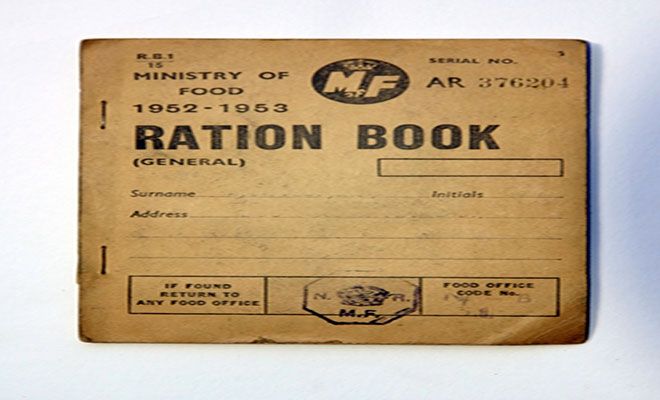
Environment
Rationing- Living in harmony with earth’s limits
 We talk to Stan Cox, author of “Losing Out Cool” who was named in The Atlantic magazine 2012 Reader’s Choice for being a Brave Thinker. A person who has risked his reputation, fortunes, and lives in pursuit of big ideas. Today, he discusses his next big idea-rationing. The world economy and our attachment to consumption has saddled the Earth with an impossible burden of greenhouse emissions, water degradation, and ecosystem destruction. Our attitude of spend now and hope for the best later has already harmed us with the recent financial crises. Should we wait and see what happens with our ecosystems? We’ll take a look at what our children will experience in their lifetimes, a world with limits placed on our consumption of water, emissions, and healthcare.
We talk to Stan Cox, author of “Losing Out Cool” who was named in The Atlantic magazine 2012 Reader’s Choice for being a Brave Thinker. A person who has risked his reputation, fortunes, and lives in pursuit of big ideas. Today, he discusses his next big idea-rationing. The world economy and our attachment to consumption has saddled the Earth with an impossible burden of greenhouse emissions, water degradation, and ecosystem destruction. Our attitude of spend now and hope for the best later has already harmed us with the recent financial crises. Should we wait and see what happens with our ecosystems? We’ll take a look at what our children will experience in their lifetimes, a world with limits placed on our consumption of water, emissions, and healthcare.
Show Highlights
- Link to Segment 1: Why is rationing like a 4 letter word? Stan Cox talks about when we will hit the limits in healthcare, water, and food. If we don’t put in place rationing, will market economics result in a fair outcome? Stan talks about water rationing.
- Link to Segment 2: Greenhouse Emissions – What are the most discussed ideas on the table for rationing gas and greenhouse emissions? What are the upsides and downsides of indirect or direct rationing?
- Link to Segment 3: Healthcare Rationing- We discuss the difficulties in rationing health care and how it’s essentially a judgment about who Gets to Live. Stan offers 3 different ways that rationing of healthcare could happen.
- Link to Segment 4: Stan’s Summary: What makes Stan feel hopeful and helpless about rationing? What has been his personal effect of writing this book?
- More shows by Stan: https://www.fireitupwithcj.com/2013/08/13/8-15-beat-the-summer-heat/
Blog Post by our Guest
by Stan Cox published in Al Jazeera
In the wake of Superstorm Sandy, parts of New York and New Jersey had a brief but intense encounter withgas rationing, an experience that not only brought up memories of the resource-strapped 1970s, but also offered Americans a brief glimpse of the future.
“What’s that?!” I can hear you saying. Rationing? Really? With the United States poised to surpass Saudi Arabia in crude oil extraction by 2020, according to the International Energy Agency? And with new pumping methods bringing a glut of natural gas? With talk of “energy independence” in the air?
Yes – rationing. In fact, if vast new reserves of fossil fuels really are becoming more and more accessible, it will become all the more necessary to impose a strict (and low) ceiling on consumption while ensuring fair access to resources.
A little math shows that if we have a decent chance holding the rise in the Earth’s average atmospheric temperature to less than two degrees Celsius – a margin beyond which lies catastrophe – we will have to leave two-thirds to four-fifths of the world’s current fossil-fuel reserves in the ground, at least beyond 2050.
But if we continue to allow prices alone to ration fuels, the bulk of that ancient carbon will, inevitably, find its way to the surface and into the atmosphere as rapidly as possible. And if we persist our all-out assault on “unconventional” fuels like tar-sand oil and shale gas, augmenting our headlong exploitation of conventional reserves, we’ll not only cook the Earth even faster, but also do irreparable damage to landscapes, water supplies and ecosystems, all with little chance of actually achieving a “golden age” of energy. Cheap fossil fuels are also undermining efforts to develop and adopt renewable energy.
| “A competing approach, developed in various forms by several UK-based groups, would ration carbon emissions through mechanisms such as ‘personal carbon allowances’.” |
Gas rationing
Delegates to the 18th United Nations climate change conference in Doha, Qatar, this week are hearing little or no discussion of either low ceilings or rationing. No nation wants to be the first to bite that bullet, but I believe that my country, the United States, should be the one to set the example by imposing strict limits on extraction and importation of fossil fuels. That in turn will create the need for a combination of price controls and equal-shares rationing – something resembling the measures we adopted in America and Europe during World War II.
(Another example from the past is the standby plan for gasoline rationing by the gallon – rather than by licence-plate number as was done after Sandy – that the US Congress passed in 1980. Had that plan gone into effect, and had we managed to hold per capita gas consumption steady for the next three decades, we could have saved 800 billion gallons – about six years of current output from US refiners.)
Rationing by quantity has been practised many times throughout history, but always in the face of scarcity. Now we face the problem of how to ration in the face of abundance. I know, I know. It’s a radical prospect – an idea that will draw condemnation from most economists and howls of “I told you so!” from America’s climate-denial industry.
Canadian commentator Daniel Greenfield, for example, charges that climate activists have no loyalty to anything but a “core austerity rationing manifesto”. Personally, I’ve never seen any such manifesto. And in promoting the idea of its existence, the far Right ignores the fact that sub rosa rationing of energy, food, water, health care and other goods on the basis of individual ability-to-pay is already the norm. The results of that approach are well known: Out-of-control consumption by the affluent, growing deprivation for the impoverished and crumbling of ecosystems worldwide.
Note that rationing of household consumption would not be an effective primary means of limiting a society’s overall ecological footprint; rather, it would become necessary when the use of resources “upstream”, in production, has been constrained. Should resource shortages strike on continental or global scales sometime in the future, or if societies come to their senses and begin treating resources, especially fossil fuels, as if they are scarce, then price controls will be required to prevent runaway inflation.
Price controls, in turn, will trigger the need for formal rationing by quantity, to ensure that everyone has access to a fair share of necessary goods. With access to fossil fuels strictly limited, there will be stronger incentives than ever to develop technologies for efficiency and renewable energy.
Think of it as a “cap and ration” system. The most widely discussed alternative to cap-and-ration, the “tax and dividend” approach proposed by NASA scientist and climate activist James Hansen, features a universal tax on carbon emissions, with universal reimbursement of revenues as an equal-shares dividend. Earlier this year, Australia actually adopted a carbon tax, accompanied by income-tax breaks and compensation aimed primarily at lower-income households.
Carbon trading
A competing approach, developed in various forms by several UK-based groups, would ration carbon emissions through mechanisms such as “personal carbon allowances“. Under these systems, there would be a national carbon budget – a hard cap – that ratchets down year by year, with Britons receiving equal shares of that budget in the form of emissions permits to be used when paying home energy bills or buying vehicle fuel.
Meanwhile, French experts have proposed gasoline rationing by quantity and entire population of Norfolk Island in the Pacific will be taking a crack at voluntarycarbon quotas. But no full-blown carbon rationing policy has yet come close to being put into place.
A feature common to all personal or household emissions rationing plans currently on the table is tradability of ration credits. This is intended to reward good conservers by allowing them to sell unused credits while allowing others to consume and emit more than their share, but only by buying permits at a high price.
Tradability, however, would allow the rich to buy their way out of conservation, while tougher rules would apply to those with less money. Personal carbon trading could also end up linking household finances to volatile “upstream” carbon markets like the European Union Emissions Trading System, riddled as they are with speculation and dubious “offset” provisions that undermine the goal of curbing emissions.
The safer, stronger path would be to retain the hard cap and have equal-shares rations but make them non-tradable, as they were in wartime. The cap would need to be fairly generous at first but quickly tighten year by year, to allow society to adjust. An alternative to tradability (one considered as long ago as the 1940s) would allow families who can’t afford to use all of their ration credits to sell their spare ones back to the government. That would enhance the family’s income while keeping a tight lid on consumption society-wide and preventing the rise of black markets. The government could raise money for the buyback programme by raising taxes on the wealthy.
What we need in the long term is a transformation of the world economy, one that shifts power from the now-dominant “one per cent” to the 99 per cent who actually produce the world’s wealth. But meanwhile, the heat’s bearing down on us. We have to become a society that puts the brakes on consumption and does it in an egalitarian way.
That, of course, would be Big Business’ worst nightmare. But, as I have argued, such a society – one that is not just independent of foreign oil, but also doesn’t depend on reckless growth that enriches the few while overworking and underpaying the many – is the only kind of society that can endure and flourish for the long haul.
In fact, by embracing the right kind of rationing, we might even discover a happier, better-fed, healthier, more comfortable and more secure world than the one we inhabit today.
Stan Cox is the author of Any Way You Slice It: The Past, Present, and Future of Rationing, to be published in May by The New Press.
The views expressed in this article are the author’s own and do not necessarily reflect Al Jazeera’s editorial policy.
About our Guest
 Stan Cox is a senior research scientist at The Land Institute in Salina, Kansas, where he works with a team of scientists on breeding perennial grain crops for future, ecologically resilient food-production systems. He has a PhD in plant genetics from Iowa State University and served as a research geneticist with the U.S. Department of Agriculture from 1983 to 1996. He lived in India from 1980 to 1982 and from 1996 to 2000; in the later period, he worked with the Institute for Rural Health Studies in Hyderabad on a study of cervical cancer in rural areas. He has published approximately 80 scientific papers and book chapters.
Stan Cox is a senior research scientist at The Land Institute in Salina, Kansas, where he works with a team of scientists on breeding perennial grain crops for future, ecologically resilient food-production systems. He has a PhD in plant genetics from Iowa State University and served as a research geneticist with the U.S. Department of Agriculture from 1983 to 1996. He lived in India from 1980 to 1982 and from 1996 to 2000; in the later period, he worked with the Institute for Rural Health Studies in Hyderabad on a study of cervical cancer in rural areas. He has published approximately 80 scientific papers and book chapters.
Cox’s columns have appeared in the Denver Post, the Atlanta Journal-Constitution, Chicago Sun-Times, the Baltimore Sun, the Hartford Courant, the Kansas City Star, the Fort Worth Star-Telegram, the San Jose Mercury-News, the Cleveland Plain Dealer, the Providence Journal, and scores of smaller papers in 27 states. He has been writing investigative environmental pieces for AlterNet since January 2005 and writes frequently for CounterPunch and CommonDreams.org. He is on the editorial board of the Green journal Synthesis/Regeneration.
He is the author of Sick Planet: Corporate Food and Medicine and contributed a chapter to Edible Estates: Attack on the Front Lawn.
Podcast: Play in new window | Download
Subscribe: Apple Podcasts | RSS | podcast






